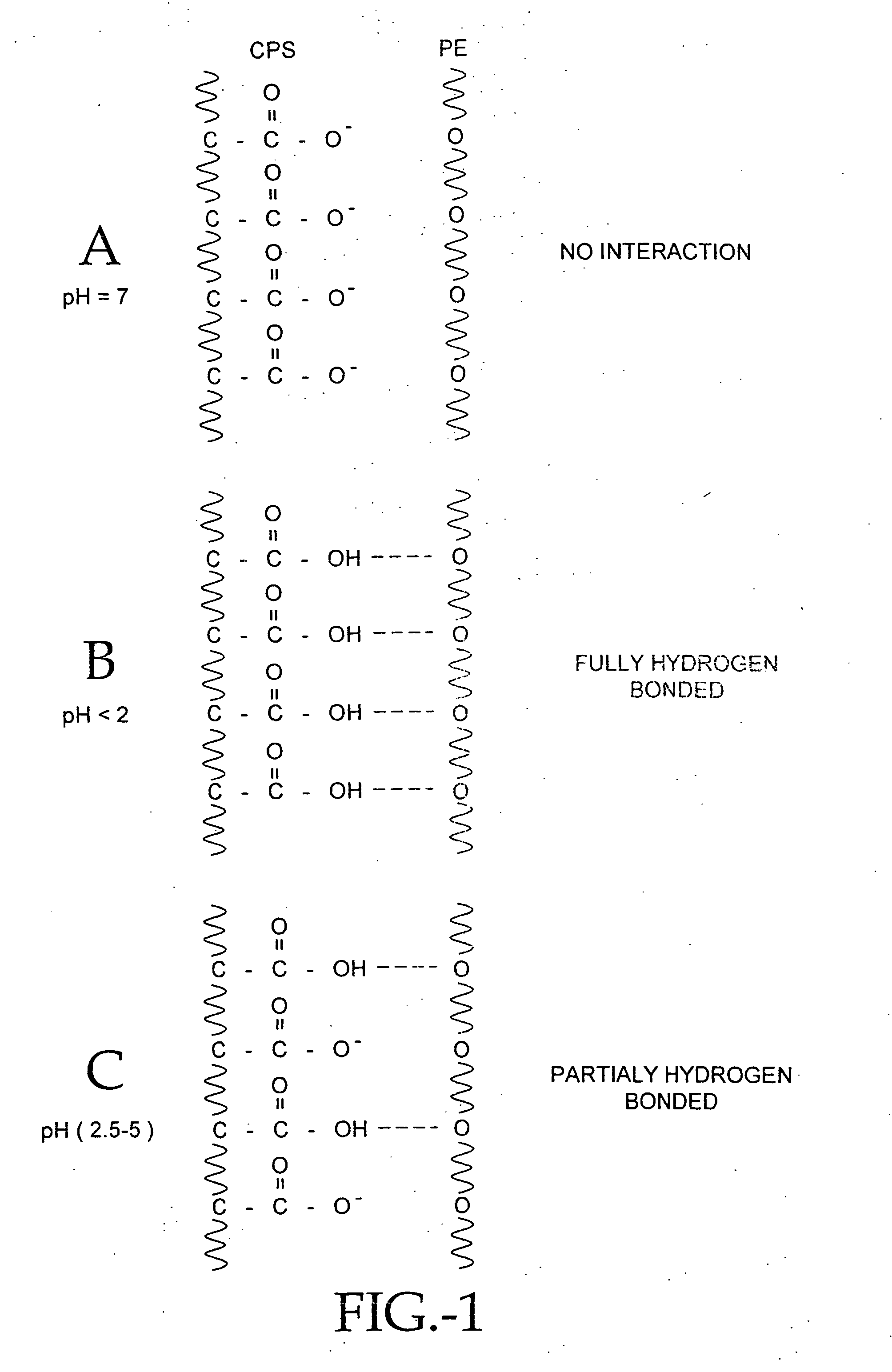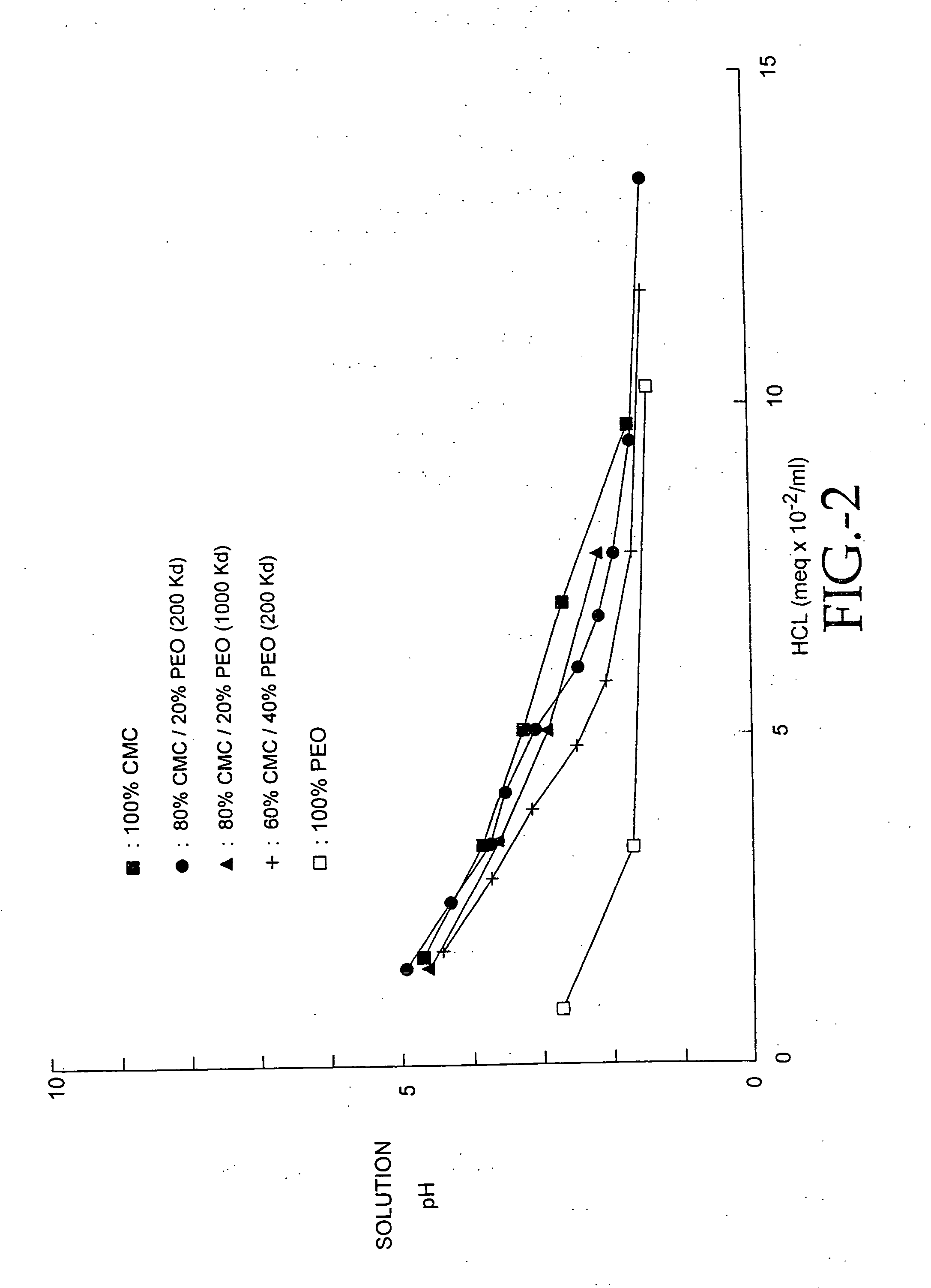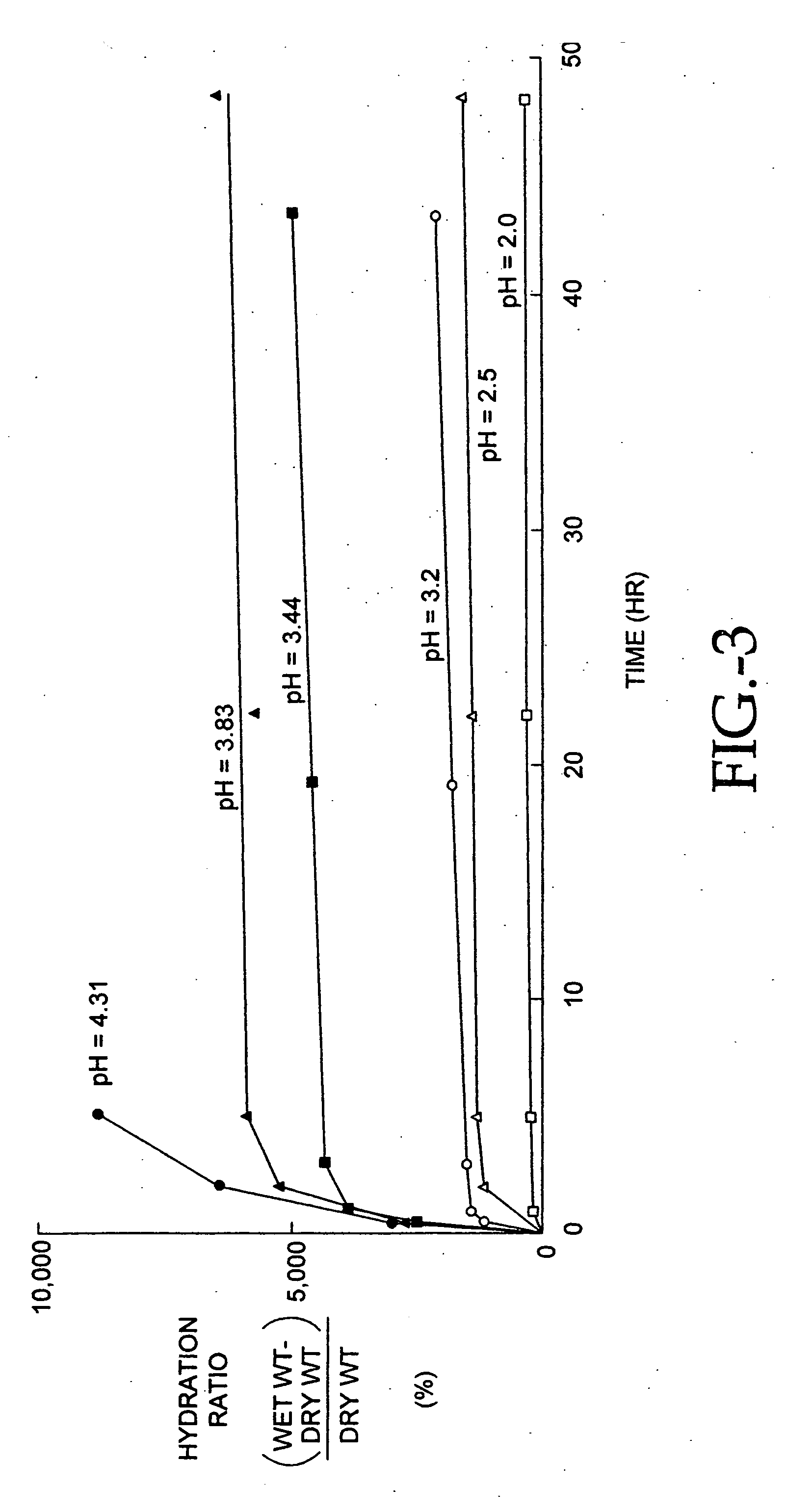Compositions of polyacids and methods for their use in reducing adhesions
a polyacid and adhesion technology, applied in the field of manufacture, can solve the problems of short half-life, short biological residence time, and limit the effectiveness of adhesion prevention, and achieve the effect of improving anti-adhesion properties
- Summary
- Abstract
- Description
- Claims
- Application Information
AI Technical Summary
Benefits of technology
Problems solved by technology
Method used
Image
Examples
example 1
Neutral CMC / PEO Membranes
Type 7HF PH (MW approximately 700 kd; lot FP 10 12404) carboxymethylcellulose sodium (CMC) was obtained from the Aqualon Division of Hercules (Wilmington, Del.). PEO with a MW of approximately 900 kd was obtained from Union Carbide (Polyox WSR-1105 NF, lot D 061, Danbury, Conn.); PEO with a MW of approximately 1000 kd was obtained from RITA Corporation (PEO-3, lot 0360401, Woodstock, Ill.).
A membrane with a composition of 65% CMC and 35% PEO was made as follows: 6.5 gm of CMC and 3.5 gm of PEO were dry-blended in a weighing dish. A Model 850 laboratory mixer (Arrow Engineering, Pennsylvania) was used to stir 500 ml of de-ionized water into a vortex at approximately 750 RPM. The dry blend of CMC and PEO was gradually dispersed to the stirred water over a time period of 2 minutes. As the viscosity of the polymer solution increased as the polymers dissolved, the stirring rate was gradually decreased. After approximately 15 minutes, the stirring rate was set...
example 2
Moderately Acidified CMC / PEO Membranes and Hydrogels
The procedure for making acidified membranes in the intermediate pH region (2.5<pH<7) initially follows the procedure outlined in Example 1. The neutral blended polymer solution containing the polymers specified in Example 1 is acidified by adding concentrated hydrochloric acid (HCl, 37.9%, Fisher Scientific, Santa Clara, Calif.) while stirring the polymer solution at 60-120 RPM for 1 hour. Initially, a white precipitate forms in the solution; the precipitate gradually disappears, and a stable solution is formed. Typically, a 2% total polymer concentration was found useful to achieve the desired viscosity for stable casting solutions. Higher polymer concentrations resulted in polymer solutions which were too viscous and too difficult to pour. Lower polymer concentrations required more casting solution for the same membrane weight which greatly increased drying time for equivalent membranes. In the 500 ml 65% CMC / 35% PEO...
example 3
Membranes with Different PEO / CMC Ratios
A 500 ml batch of a 80 / 20 CMC / PEO membrane was obtained by dissolving 8.0 gm CMC and 2.0 gm PEO in 500 ml de-ionized water (source of CMC and PEO and solution processes were as in Example 1). While stirring at low speed (60 RPM), 200 gm of this polymer solution was acidified with 1500 μl of 5 N HCl (LabChem, Pittsburgh, Pa.), resulting in an equilibrium pH of 3.17. The acidified polymer solution was next poured into polystyrene dishes and dried out in a similar way as described in Example 1. By changing the relative amounts of CMC and PEO, membranes with different compositions were obtained. 100% CMC membranes were more brittle and less flexible than PEO-containing membranes. For our purposes, membranes which contain more than 70% PEO are generally not preferable as these membranes were unstable in an aqueous environment.
TABLE 5Viscosity of Solutions With Different CMC / PEO Ratios(cps, @ Spindle #6, 20° C.MembraneComposition(1000 kd PEO)Spin...
PUM
| Property | Measurement | Unit |
|---|---|---|
| pH | aaaaa | aaaaa |
| pH | aaaaa | aaaaa |
| molecular weight | aaaaa | aaaaa |
Abstract
Description
Claims
Application Information
 Login to View More
Login to View More - R&D
- Intellectual Property
- Life Sciences
- Materials
- Tech Scout
- Unparalleled Data Quality
- Higher Quality Content
- 60% Fewer Hallucinations
Browse by: Latest US Patents, China's latest patents, Technical Efficacy Thesaurus, Application Domain, Technology Topic, Popular Technical Reports.
© 2025 PatSnap. All rights reserved.Legal|Privacy policy|Modern Slavery Act Transparency Statement|Sitemap|About US| Contact US: help@patsnap.com



